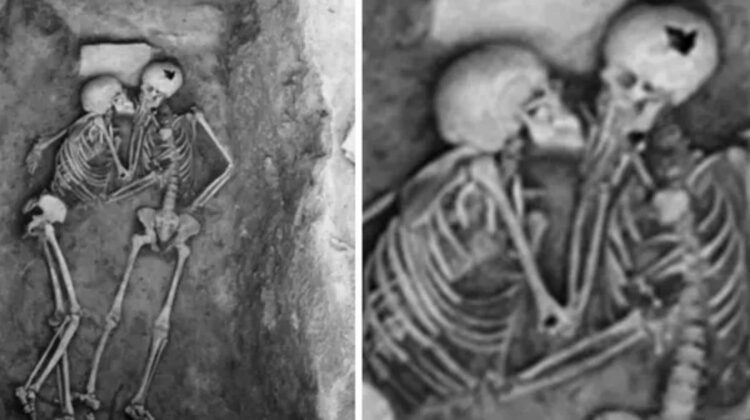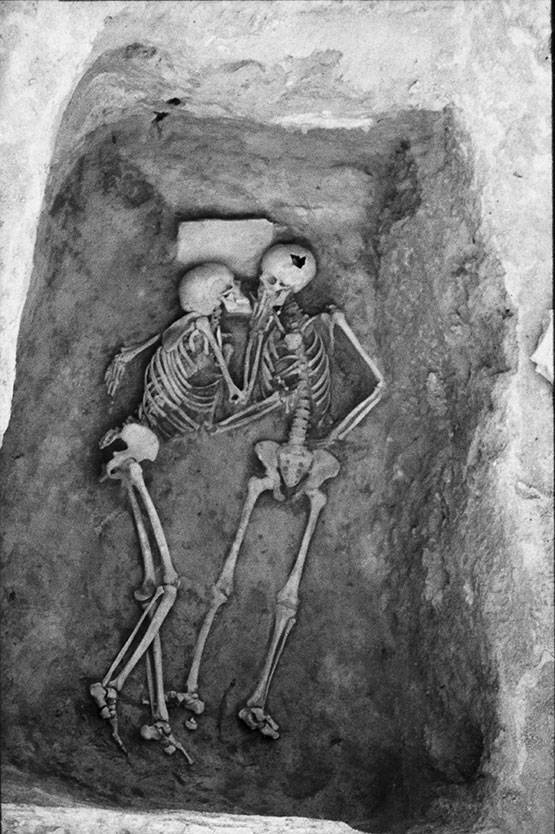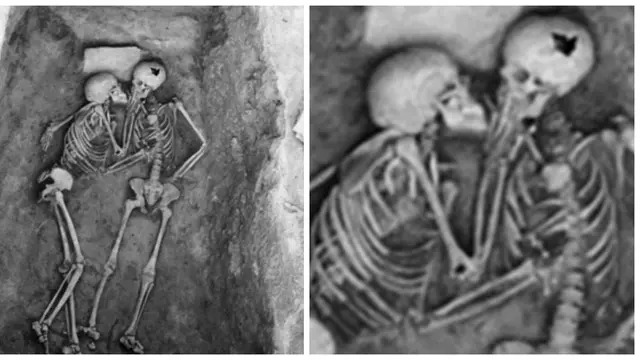
Unearthed in 1972 from the ruins of an ancient Iranian city, the Hasanlu Lovers have captured hearts and imaginations for decades. Their remains, locked in an embrace that seemingly defies time, offer a glimpse into a life tragically cut short, but leave a multitude of questions unanswered.
A Discovery from the Ashes
The story begins in the 1970s, during an archaeological excavation in northwest Iran. The University of Pennsylvania team unearthed the remains of Teppe Hasanlu, a city that thrived millennia ago. Amidst the remnants of a civilization ravaged by fire, a discovery unlike any other came to light – two skeletons nestled together in a mudbrick grain bin.

The Lovers, or Something More?
Their posture, seemingly an embrace or a kiss, fueled the media’s portrayal of the Hasanlu Lovers as a romantic couple. However, the archaeological evidence paints a less definitive picture.
Dating back to around 800 BCE, the city of Teppe Hasanlu met its demise at the hands of invaders. The skeletal remains scattered throughout the city – men, women, and children – paint a grim picture of an entire civilization wiped out. The Hasanlu Lovers were likely caught in the crossfire, seeking refuge in the grain bin before succumbing to asphyxiation from the raging fires.
A Bond Beyond Definition
While the media narrative focused on romance, the exact nature of the relationship between the two individuals remains a mystery. Scientific analysis identified one skeleton as a young male (18-22 years old) based on pelvic shape and dental structure. The other, however, presents a more complex puzzle.

Aged between 30 and 35, the sex of the second individual is unclear. The skeletal features exhibit characteristics of both genders, and forensic evidence leans towards the possibility of another male.
This ambiguity fueled further speculation – could they have been a same-sex couple?
Beyond Labels: A Window into the Past
The answer may lie beyond the limitations of modern labels like “gay” or “straight.” Ancient societies likely held different views on sexuality compared to our own. While same-sex relationships undoubtedly existed, they may not have carried the same social connotations we associate with them today.
The Hasanlu Lovers offer a powerful testament to the enduring power of human connection. Regardless of the specific nature of their bond, their final act speaks volumes about the comfort and solace they sought in each other’s presence during a moment of unimaginable peril.

A Legacy of Questions
The Hasanlu Lovers serve as a poignant reminder of the fragility of life and the enduring power of human connection. While the exact circumstances surrounding their final moments may forever remain a mystery, their story continues to spark curiosity and inspire reflection on the enduring nature of human relationships across the ages.

Leave a Reply